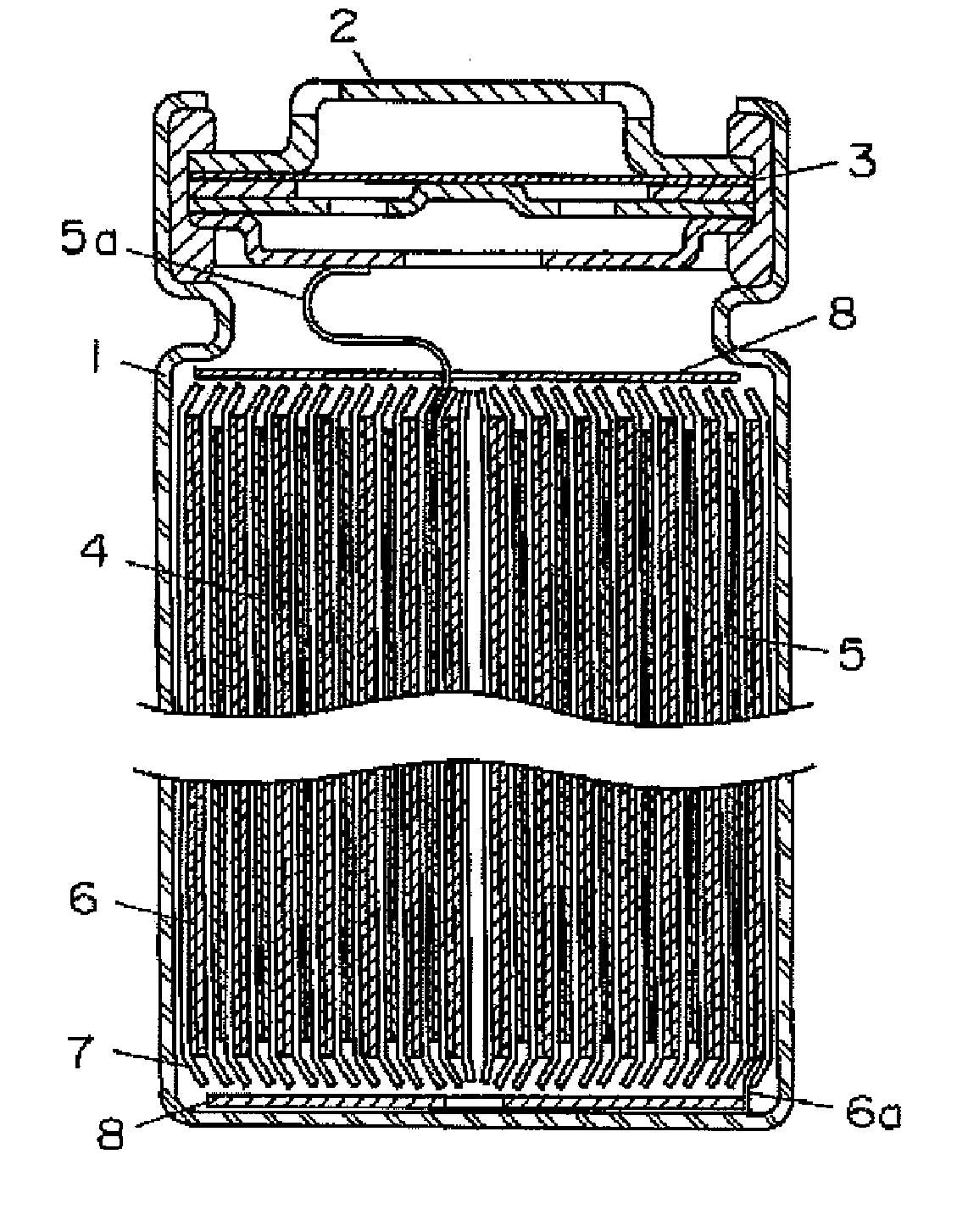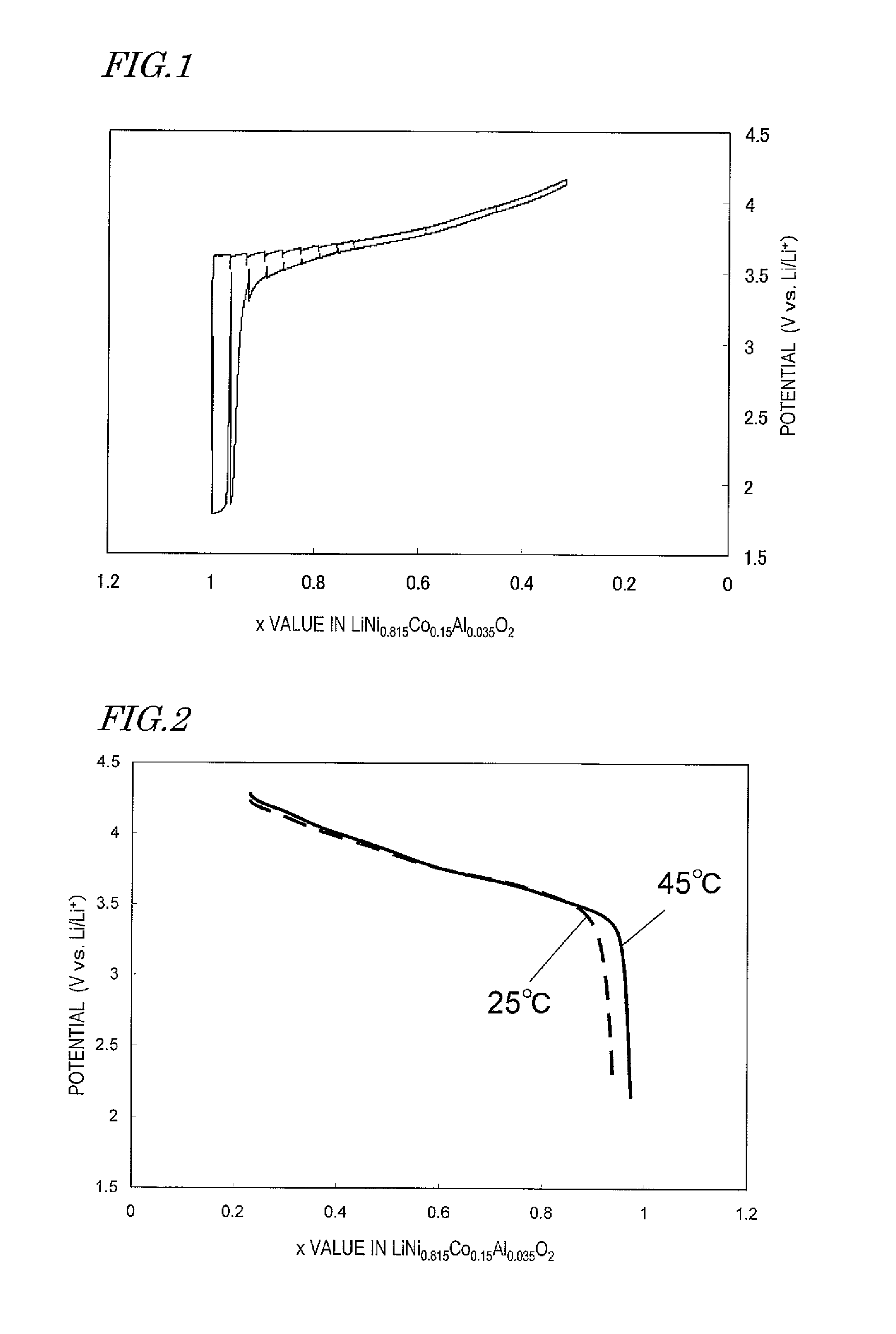Lithium secondary battery
a secondary battery and lithium battery technology, applied in the field of lithium secondary batteries, can solve the problems of low operating potential, difficult to increase the energy density of lithium secondary batteries, and low operating potential, so as to improve the charge-discharge cycle characteristics, increase the positive electrode, and reduce the effect of capacity
- Summary
- Abstract
- Description
- Claims
- Application Information
AI Technical Summary
Benefits of technology
Problems solved by technology
Method used
Image
Examples
first embodiment
[0069]Hereinafter, a lithium secondary battery according to a first embodiment of the present invention will be described.
[0070]A lithium secondary battery according to the present embodiment includes a positive electrode containing a positive-electrode active material, a negative electrode containing a negative-electrode active material capable of occluding and releasing lithium, a separator disposed between the positive electrode and the negative electrode, and a nonaqueous electrolyte.
[0071]The positive-electrode active material in the present embodiment is a nickel-type lithium-containing complex oxide capable of occluding and releasing lithium. The nickel-type lithium-containing complex oxide may be an LiNiO2-based material in which a portion of the Ni is substituted by another element selected from the group consisting of Mg, Sc, Y, Mn, Fe, Co, Ni, Cu, Zn, Al, Cr, Pb, Sb, and B.
[0072]As the negative-electrode active material in the present embodiment, a graphite-type material ...
examples 5 to 7
[0270]By using a negative-electrode active material containing a graphite-type material and lithium titanate (lithium titanium Oxide; LTO), evaluation cells H to J having mutually different weight ratios between LTO and the graphite-type material were produced. By using these evaluation cells, the relationship between the weight ratio between LTO and the graphite-type material, the ratio of irreversible capacities of the positive electrode and the negative electrode, and the charge-discharge cycle characteristics was studied.
[0271](4-1) Production of Evaluation Cells H to J
[0272](4-1-1) Production of Positive Electrode
[0273]By a method similar to the method described in (2-1) of (Experiment 2), a positive-electrode active material having a composition expressed as LiNi0.815Co0.15Al0.035O2 was produced.
[0274](4-1-2) Production of Negative Electrode
[0275]By providing a coating of a mixture of a graphite material and lithium titanate (LTO) on the negative-electrode current collector, a...
PUM
| Property | Measurement | Unit |
|---|---|---|
| current density | aaaaa | aaaaa |
| pause time | aaaaa | aaaaa |
| temperature | aaaaa | aaaaa |
Abstract
Description
Claims
Application Information
 Login to View More
Login to View More - R&D
- Intellectual Property
- Life Sciences
- Materials
- Tech Scout
- Unparalleled Data Quality
- Higher Quality Content
- 60% Fewer Hallucinations
Browse by: Latest US Patents, China's latest patents, Technical Efficacy Thesaurus, Application Domain, Technology Topic, Popular Technical Reports.
© 2025 PatSnap. All rights reserved.Legal|Privacy policy|Modern Slavery Act Transparency Statement|Sitemap|About US| Contact US: help@patsnap.com



